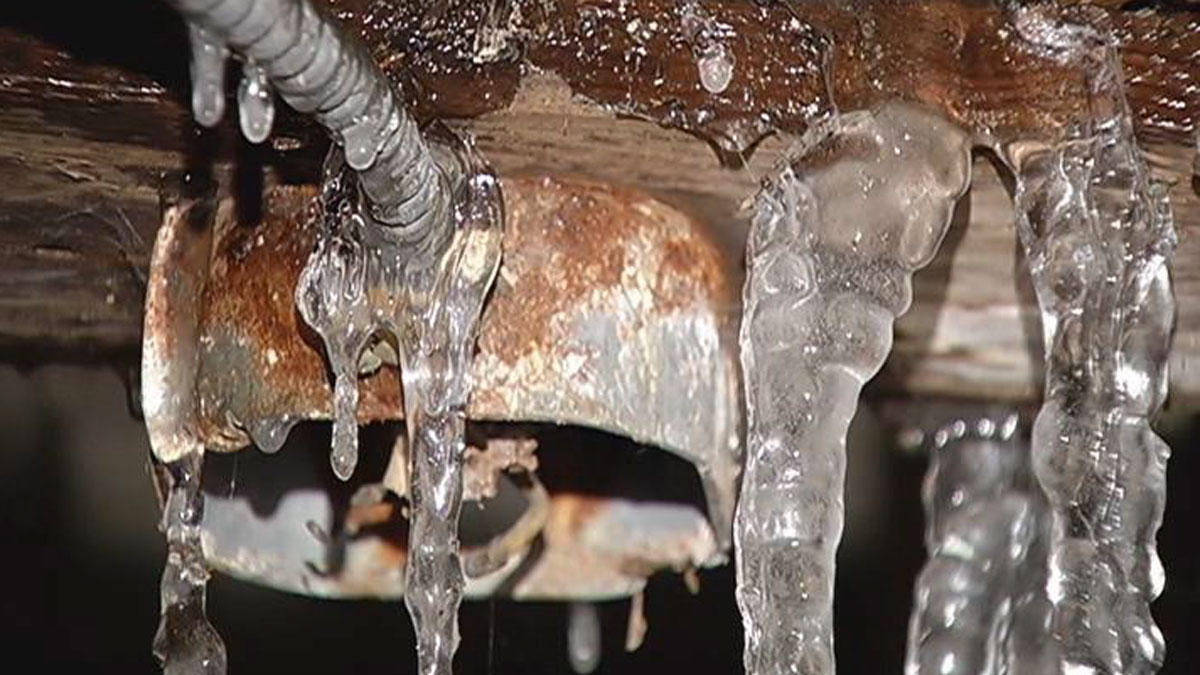Guidance for Avoiding Frozen Plumbing in Winter: Professional Advice
Guidance for Avoiding Frozen Plumbing in Winter: Professional Advice
Blog Article
In this article below you will find a bunch of helpful help and advice pertaining to Prevent Frozen Pipes .

Winter can wreak havoc on your pipes, specifically by freezing pipes. Below's how to avoid it from taking place and what to do if it does.
Intro
As temperature levels drop, the danger of frozen pipelines boosts, possibly bring about costly repair services and water damages. Comprehending exactly how to avoid frozen pipes is important for property owners in chilly climates.
Avoidance Tips
Protecting vulnerable pipelines
Cover pipes in insulation sleeves or use warmth tape to secure them from freezing temperatures. Focus on pipelines in unheated or outside areas of the home.
Heating strategies
Keep indoor spaces properly warmed, particularly locations with plumbing. Open up cupboard doors to allow cozy air to circulate around pipes under sinks.
Just how to determine icy pipes
Try to find decreased water flow from taps, unusual smells or noises from pipes, and noticeable frost on subjected pipes.
Long-Term Solutions
Structural adjustments
Consider rerouting pipes away from exterior wall surfaces or unheated locations. Add added insulation to attics, basements, and crawl spaces.
Updating insulation
Invest in high-grade insulation for pipes, attics, and walls. Appropriate insulation assists preserve constant temperatures and lowers the threat of frozen pipes.
Safeguarding Outside Plumbing
Yard tubes and exterior taps
Separate and drain pipes yard pipes before wintertime. Set up frost-proof faucets or cover outdoor taps with insulated caps.
Understanding Icy Pipelines
What creates pipelines to ice up?
Pipelines ice up when subjected to temperatures below 32 ° F (0 ° C) for expanded periods. As water inside the pipelines freezes, it expands, putting pressure on the pipe walls and potentially creating them to break.
Threats and problems
Icy pipes can bring about water supply interruptions, residential or commercial property damage, and expensive repair work. Burst pipes can flooding homes and create considerable architectural damage.
Signs of Frozen Pipes
Identifying icy pipelines early can prevent them from bursting.
What to Do If Your Pipelines Freeze
Immediate activities to take
If you believe icy pipelines, keep taps open to alleviate stress as the ice thaws. Make use of a hairdryer or towels soaked in hot water to thaw pipes gradually.
Conclusion
Protecting against frozen pipelines needs proactive procedures and quick responses. By recognizing the reasons, signs, and preventive measures, homeowners can safeguard their pipes throughout winter.
5 Ways to Prevent Frozen Pipes
Drain Outdoor Faucets and Disconnect Hoses
First, close the shut-off valve that controls the flow of water in the pipe to your outdoor faucet. Then, head outside to disconnect and drain your hose and open the outdoor faucet to allow the water to completely drain out of the line. Turn off the faucet when done. Finally, head back to the shut-off valve and drain the remaining water inside the pipe into a bucket or container. Additionally, if you have a home irrigation system, you should consider hiring an expert to clear the system of water each year.
Insulate Pipes
One of the best and most cost-effective methods for preventing frozen water pipes is to wrap your pipes with insulation. This is especially important for areas in your home that aren’t exposed to heat, such as an attic. We suggest using foam sleeves, which can typically be found at your local hardware store.
Keep Heat Running at 65
Your pipes are located inside your walls, and the temperature there is much colder than the rest of the house. To prevent your pipes from freezing, The Insurance Information Institute suggests that you keep your home heated to at least 65 degrees, even when traveling. You may want to invest in smart devices that can keep an eye on the temperature in your home while you’re away.
Leave Water Dripping
Moving water — even a small trickle — can prevent ice from forming inside your pipes. When freezing temps are imminent, start a drip of water from all faucets that serve exposed pipes. Leaving a few faucets running will also help relieve pressure inside the pipes and help prevent a rupture if the water inside freezes.
Open Cupboard Doors
Warm your kitchen and bathroom pipes by opening cupboards and vanities. You should also leave your interior doors ajar to help warm air circulate evenly throughout your home.

Do you appreciate reading about How to Prevent Your Pipes From Freezing? Write a remark below. We would be delighted to hear your views about this post. We hope that you come back again soon. I beg you pause to distribute this page if you liked it. We value reading our article about How To Avoid Freezing Pipes.
Visit Link Report this page